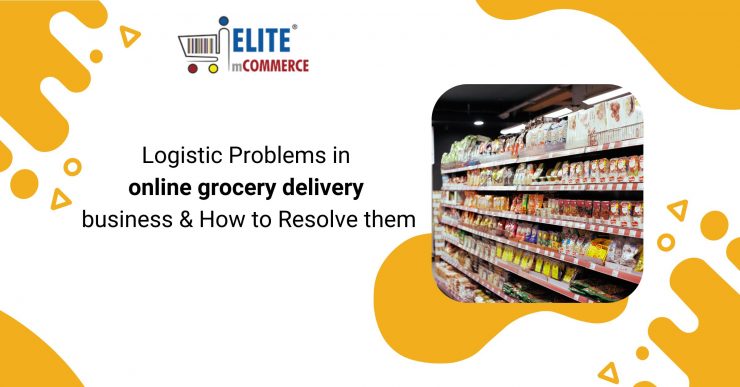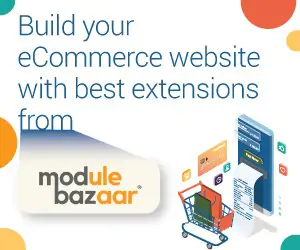The shift to digital has increased during the pandemic, with more people using e-Commerce to purchase products that would have previously been bought in physical stores
It is estimated that 95% of purchases will be made online by 2040, with a focus on online grocery shopping. This trend presents opportunities for retailers to address e-Commerce challenges and find solutions. As consumers increasingly turn to online shopping, e-Commerce is becoming a viable option for entrepreneurs.
It is therefore important for grocery retailers to understand business logistics management with the help of a grocery delivery app.
Good logistics are crucial for the success of an e-Commerce business, as timely delivery is essential. A well-developed logistics and shipping process helps minimize risks and ensure smooth operations. However, there are significant challenges that can impact logistics in an e-Commerce business, particularly as commercial boundaries expand and the demand for logistics increases.
Here are some 7 challenges faced by e-Commerce businesses in logistics:
- Tracking online orders
The ability for customers to track their orders and receive regular updates is crucial for a positive experience in online supermarket shopping. Customers want to know when their package has been shipped, is out for delivery, and has been delivered.
Even if an order is delayed, being able to track it can provide reassurance. It is important for companies to have a tracking solution that allows customers to easily follow the progress of their orders and receive clear notifications about their estimated arrival.
- Controlling shipping costs
To ship an order faster? Or to transport it for less money? Since it’s been posed, this question has presented difficulties for e-Commerce businesses, and it still does today.
The goal here is to fulfill orders and satisfy consumers while minimizing cost increases and negative effects on profit margins. The majority of online buyers are really okay with a little bit of order delay if it means paying reduced (or nil) delivery costs. Customers occasionally request express delivery, but it’s typically ideal to provide it as an optional extra that they may purchase in these circumstances.
Sticking to a single delivery option has become another problematic habit for several e-Commerce businesses. The reasoning for this is simple: Why modify something that is already effective? But that also means you might not be selecting the most cost-effective delivery method for every shipment, which might raise shipping costs.
- Control refunds in online shopping
Returns are becoming an essential component of the internet purchase process. Online customers are used to hitting the “buy now” button and then quickly returning the item if it doesn’t live up to their expectations, whether it be broken goods or shoes that are the incorrect size. Precisely 30% of shoppers. However, 3 out of 4 of her customers complain that the online return process is difficult.
With 56% of online shoppers basing their purchase decisions on return policies, if you don’t prepare carefully, you might accidentally click on a discount. Online retailers must make sure that their return logistics are just as effective as their shipment capabilities.
This means eCommerce brands will need to keep a close eye on their customers’ return behavior while monitoring consumer trends. It also means using returns as a customer touchpoint opportunity to pivot towards a loyalty-driven offering and develop a lasting relationship with them.
Read also: Save Money and Time: Why Go for Online Grocery Shopping?
- Growing your online store’s logistics
The hardest part of increasing online sales is meeting demand without overextending yourself. Rapid increases in online sales force many businesses to scramble to speed up their e-commerce logistics procedures.
Understanding grocery delivery service and using dynamic scaling logistics would allow e-commerce firms to expand or contract their supply chains without using up all of their financial or physical resources. 3PL providers are created expressly to handle this size.
To assist customers to maximize their investment in e-commerce, the ideal provider would provide strategic insight into development potential.
- Free delivery is provided to meet customer expectations
For e-commerce firms, home delivery grocery has come to be seen as the norm. In actuality, providing free shipping relies on a number of variables, such as:
- The cost of the goods
- Objects being transported weigh a certain amount
- The typical E-Commerce purchase amount
- The location of the order’s shipment
- The customer’s anticipated delivery window
E-Commerce firms must factor the expenses of free delivery into their rates and come up with a promotion that benefits both the customer and the shop if they want to effectively offer free shipping while maintaining a profit. This may entail requiring a minimum purchase quantity or limiting the use of free delivery to a certain group of goods.
- Shipping blunders
Shipping mistakes can be very frustrating for consumers waiting for their products and may be very frustrating for e-commerce firms. These errors can be as simple as inputting the wrong address, forgetting to include a tracking number, or miscalculating the weight or size of a box.
Investments in postal software and technology can assist to automate processes that might otherwise involve human error, allowing the mailing process to be totally outsourced to a reputable 3PL.
- Locate shipping logistics and order fulfillment providers
When it comes to many e-commerce logistics issues, third-party logistics services might be the most efficient option. But it might be challenging to pick the best service. When customers order groceries online, the delivery procedure has a significant influence on their online shopping experience. Many large e-commerce businesses use their 3PL supplier to handle their fulfillment process, finding a fulfillment company that values the level of attention to detail your online business has worked so hard to establish is the key.
Efficiency shouldn’t come at the expense of becoming just another faceless internet vendor. The ideal supplier can assist you in scaling while maintaining flexibility in their products to accommodate your demands. But more crucially, a 3PL solution may offer guidance and assistance that reduce anxiety.
Discover more about our Elite mCommerce and retail solutions to discover more about eCommerce fulfillment.
Conclusion
The logistics of the grocery sector are intricate and multidimensional, and they entail overcoming a variety of obstacles in order to deliver goods to clients quickly and effectively. From managing inventory and transportation to adapting to changing consumer demands and dealing with waste, there are many logistical considerations that need to be taken into account.









Add comment